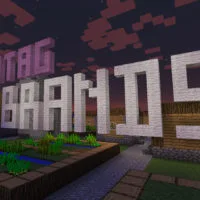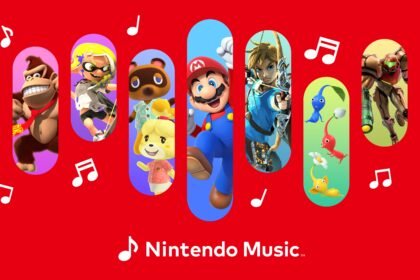By: Anna-Michelle Lavandier
While gearing up for choosing your next in-game character, you have plenty of choices: White or Asian. If you’re looking for another option, depending on the game, you might be out of luck.
Even with Latino/a characters being included in some games, they still have not overcome enough in-depth character development to be represented in a non-stereotypical way.
According to Latinos and Narrative Media, a book written by Frederick Luis Aldama, despite the increase of a Latino presence, there is still much more to be done in order to bring more Latino voices in games.
“Certainly, today there are more video games by and about Latinos than in the past,” Aldama states in the book. “We have more story-worlds that feature Latino characters (playable and non-playable) in all varieties of video-game scenarios: from shooter games to dance and fighting competitions to puzzle-solving adventures. While advances have been made in the representation of Latinos in multiply mediated formats, Latinos typically appear as a non-playable character, obstacle to overcome, or simply part of the backdrop.”
Emmanuel Marte, 28, of New York is active in the fighting game community, focusing lately on Street Fighter V. While he has played a variety of characters through the years, Marte doesn’t recall seeing many Latino characters, let alone playing as them.
“I don’t think the majority of people care, but it’s there,” Marte said. “I think people are so used to it by now. There are a very low number of Latino characters compared to white and Asian in fighting games. There some in Tekken and King of Fighters. They are obviously stereotypical, like in [Grand Theft Auto]. But it would be cool to have a Dominican fighting character in a game.”
Alberto Saldamando is the Editor-in-Chief of a technology and video game blog called El Mundo Tech. To cater to both Latino and non-Latino audiences, he translates his stories and publishes them in English and Spanish. In the eight years that the blog has been running, Saldamando has noticed that the audience for these games are there in the Latino community, but representation is lacking. He believes that this may be due to lack of representation on the level of game development itself.
“I believe there may be a connection between the lack of Latino game developers (in and outside of the US) and the number of characters of Latino heritage,” Saldamando said. “For now, independent developers seem to be the hope for Latino presence in game development. Papo & Yo, Square (made for the PSP), and a few others have been made by Latinos. So far, mobile gaming is the more direct opportunity for interested and upcoming Latino game developers to jump in and demonstrate their skills.”
Missy Senteino, a graduate student studying Video Game Design at New York University, has focused on the topic of diversity in her education and feels that the underlying issue may be the audiences that video games are trying to reach out to.
“The issue is that it caters to a largely white male and Asian male audience. Latinos, I feel, are the biggest underrepresented group in video games. But they play probably more video games than white and black players. There is a kind of white-washing in games. The people in power aren’t making an issue about it. People feed to what they are.”
A study titled Violence, Sex, Race, And Age In Popular Video Games: A Content Analysis by Karen E. Dill, Douglas A. Gentile, William A. Richter, And Jody C. Dill, looks into what kinds of insight audiences are getting by the current display of minority representation in video games.
“The Media Education Foundation (Huntemann, 2000) reported that 8 of the 10 top-selling games feature White characters,” it stated. “Racial minorities are depicted primarily in stereotypical ways.”
Well-known Latino/a video game characters include King and Christie Monteiro from “Tekken,” Isabela Keys from “Dead Rising,” Dominic Santiago from “Gears of War,” T. Hawk and El Fuerte in the “Street Fighter” series and many more.
To attempt to solve this problem of misrepresentation, Saldamando feels that more Latino/a developers involved and active in the industry would be a step in the right direction.
“We, as Latinos/Latinas and also as African-Americans, won’t have games featuring us as characters until we all move forward in the industry first, and for that, we would have to take a look at the education here,” Saldamando said. “Not many of us get into college to study computer science or other related majors. What could be done about this? Perhaps, we need to get united. If only there were more positive Latino characters in all of gaming that the not-so-few stereotyped background ones in the well-known GTA (Grand Theft Auto) games, because that’s the current situation we’re at.”
Saldamando noted that because there is only a handful of Latino/a characters represented in games, the future of non-stereotypical representation depends on more of these voices within the industry itself.
“They are so few compared to the hundreds or thousands of characters in many other games who are Caucasians, followed by Asians,” he said. “Of course, America and Asia are the places where the gaming industry is at, especially mobile gaming now in Japan, but still our Latino presence is still in the single-digits.”
The hypothesis proven through the study is that the perspectives gained through these experiences can affect people’s outlook of the world for years to come. For players looking for a relatable character, especially if they are children, this may be a real perception that can affect them. It is a huge benefit for the video game industry to include these diverse voices into the overall discourse, especially if these new voices will make a new way in the future of the industry.
“Young people are not passive consumers of media and cultural content,” it said. “Increasingly, they are producing and sharing content with their peers, thus altering their media and cultural environment in unprecedented ways. Video games, for example, can no longer be viewed as merely a source of leisure and entertainment, but also as a site of cultural resistance and empowerment.”
Anna-Michelle is a graduate student at the CUNY Graduate School of Journalism in New York City. She is studying diversity in video games and the video game community for her thesis project, which can be found on her upcoming blog titled The Nerd Castle. Follow her on Twitter: @amlavandier.





 Noticias NewsWire
Noticias NewsWire 





